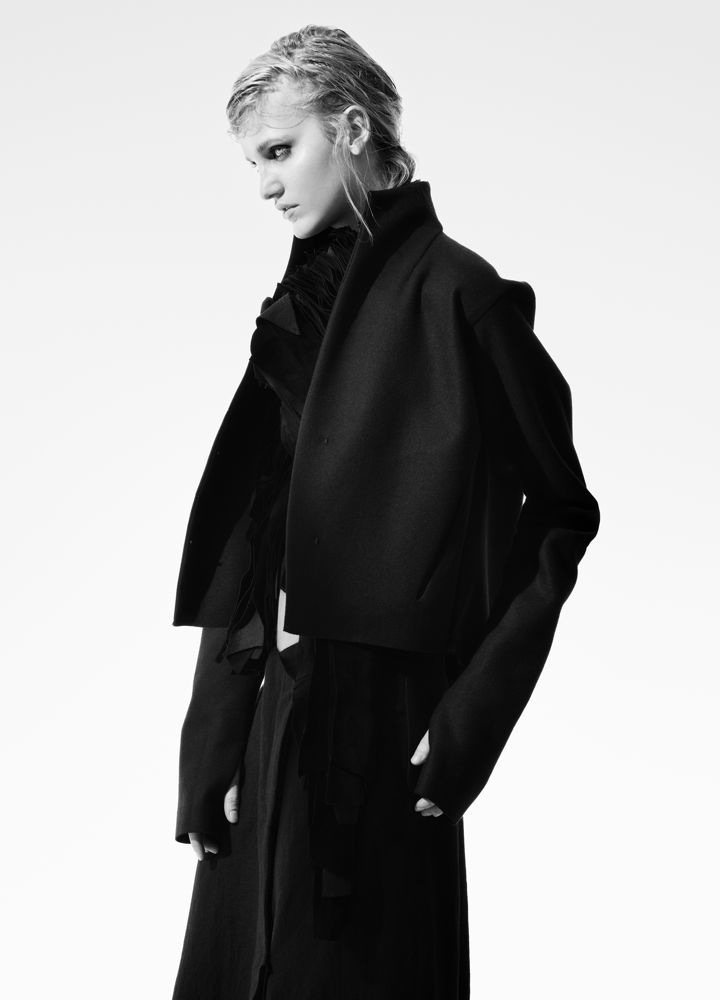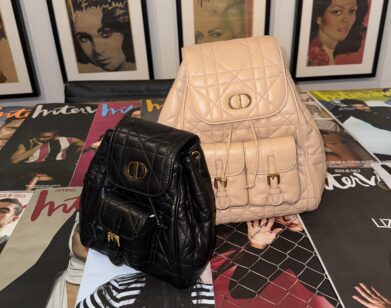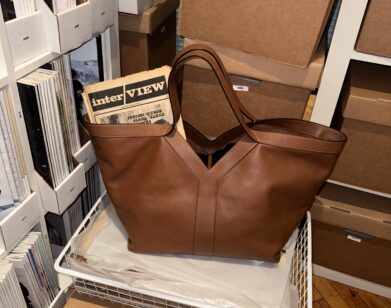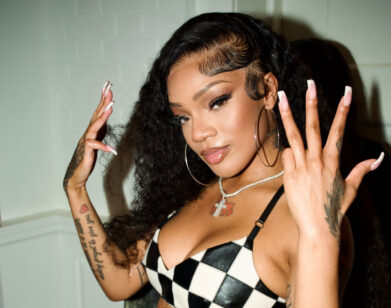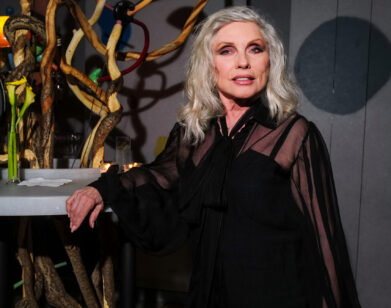Barbara I Gongini: Nordic by Nature
“There is a difference between the sexes, as there should be—thank God for that,” says Faroese designer Barbara I Gongini. “Nonetheless, there is a place, in my opinion—somewhere in the mid center—where there is a crossover or a neutral zone that I am quite fascinated with.”
It is in this “neutral zone” that Gongini developed her striking style that mixes avant-gardism and androgyny. With her eponymous line, Gongini irreverently blurs the line between the masculine and feminine that humanizes, and equalizes, fashion.
We spoke with the designer, who is currently based in Copenhagen, about sustainable ethics, fabrics as art, and how her clothes allow the wearer to be whomever they want to be.
KATE LAWSON: From the Faroe Islands to Copenhagen, how did your journey into fashion begin?
BARBARA I GONGINI: I always had a devotion for the arts and design since a very early age. It felt like a natural thing for me to step into the fashion scene and explore my ideas, turning them into tangible creations.
LAWSON: Copenhagen has become a hotbed for innovative fashion designers such as Astrid Andersen and Anne Sofie Madsen —why do you think that is?
GONGINI: I am proud to see that Copenhagen has fostered such creative minds and that they had the balls to be bold enough and go out and kick ass! Having said that, I think that such success may reside in the fact that Scandinavia does in fact provide a safety net, a welfare system, that gives a bit of a springboard for “entrepreneurial minds” to flourish.
LAWSON: And you too are “kicking ass” with designs that visually blend identity and play with unique forms and structures.
GONGINI: I always opt to stay true to my voice, but it’s a challenge to transcend certain aesthetic expressions into a wearable design. Androgyny was an influential force when the brand was born, but it has evolved and progressed throughout the years and it became important for me to create a line exclusively for men and women, purely for functional reasons. At the end of the day, I urge my wearers to choose whatever they feel comfortable in, whether the garment was designed with a male or female in mind.
LAWSON: Tell me about your design process?
GONGINI: Each design is built upon certain principles as each garment has a skeleton that later requires layering, sculpting, and finishing. Once you start to modulate the garment, the creative nerve may strike at any end of the spectrum—ranging from strong expression, as seen in its most optimal form in our showpieces, to more subtle designs. It’s during the modulate phase where a multi-faceted character of the silhouette is explored, and that’s where the sky becomes the limit. [laughs]
My collections are part of a never-ending story, which allows me to turn the chapter where I previously left off. This is where the birth of the numerical notion of my collections surfaced. My designs are not trend based, but instead the focus is placed on nurturing a longevity formula. I base it on a wardrobing concept, which is something that I am very passionate about continuing in my work.
LAWSON: What about a muse—is there someone you admire who reflects the philosophy and spirit of your designs?
GONGINI: I care for the art of juxtaposition. So I don’t idolize anyone per se, but I like to discover the fascination in various creatures from different walks of life.
LAWSON: Do you enjoy seeing how each wearer translates your designs?
GONGINI: Yes. I love to give our wearers a diverse range of choice, creating designs that allow for individual interaction and the right personalization.
LAWSON: Strong expression and detailing is definitely a theme that runs throughout your collections, especially in comparison with Japanese designers who championed fashion avant-gardism. Did any of those visionaries inspire you to create?
GONGINI: I have an immense respect for the forefathers of avant-gardism—one of them being Rei Kawakubo. The Japanese design culture has altered the fashion industry through their novel creations and there is a synergy of workmanship, concepts, and principles that are definitely aligned with our DNA design structure.
LAWSON: Is it important that your designs stand out from the crowd then?
GONGINI: Our designs are not bound by trends, sex, orientation, societal order, and other normative pressures. So in that sense, yes… I like to push boundaries with my creations and start a dialogue. I believe in uncompromised aesthetics.
LAWSON: Although you describe your brand as high-end, your aesthetic also fits into the youth-driven streetwear market. What current pop culture references have impacted your brand?
GONGINI: I draw a sense of inspiration from the buzz of upcoming generations, where the music scene has acted as a springboard for new ideas, giving a sense of direction. I’ve had the pleasure to work with several artisans throughout my career, and the most recent collaboration was with my fellow countrymen, ORKA, where experimental sound electronics have rocketed my orbit!
LAWSON: ORKA scored your S/S 2014 and F/W 2014 shows. The combination of their music and your designs brought an emotive darkness and poetic energy to the shows—do you think Nordic melancholia has been a big inspiration to you?
GONGINI: Yes, my home origins have influenced our color scheme. Being from the Faroe Islands, I draw inspiration from the architectural landscape, the misty woods, the raw textures of soil and chalk, and the dark Northern Atlantic Ocean in constant outburst. There is something very poetic in the way Mother Earth orchestrates all of these elements that I am keen on translating and exploring in my creations. I prefer “non-color” as a palette as it allows fabrics and textures to speak as color instead.
LAWSON: Sustainability has become a big factor in your design ethos. Where do you see the future of ethical fashion?
GONGINI: I take pride in rating my collections according to the sustainability factors, creating a product rich on longevity and multi-functionality, creating designs that can be rekindled for years to come. It is the responsibility of the entire business to shift up the mentality—everyone in the supply chain needs to push for eco-friendly solutions and fair trade, and it’s the end customer’s responsibility to choose a more sustainable product.
At the Copenhagen Fashion Summit this year, the world largest event on sustainability and fashion, our designs were specially recognized in the Denim Challenge for turning an unexpected silhouette into a classic product. There is definitely a need to take action towards global responsiveness within the fashion industry.
LAWSON: Talking of the future, what’s coming next for you?
GONGINI: There are several exciting projects currently in orbit—you just have to stay tuned!
FOR MORE ON BARBARA I. GONGINI, VIST HER WEBSITE.

